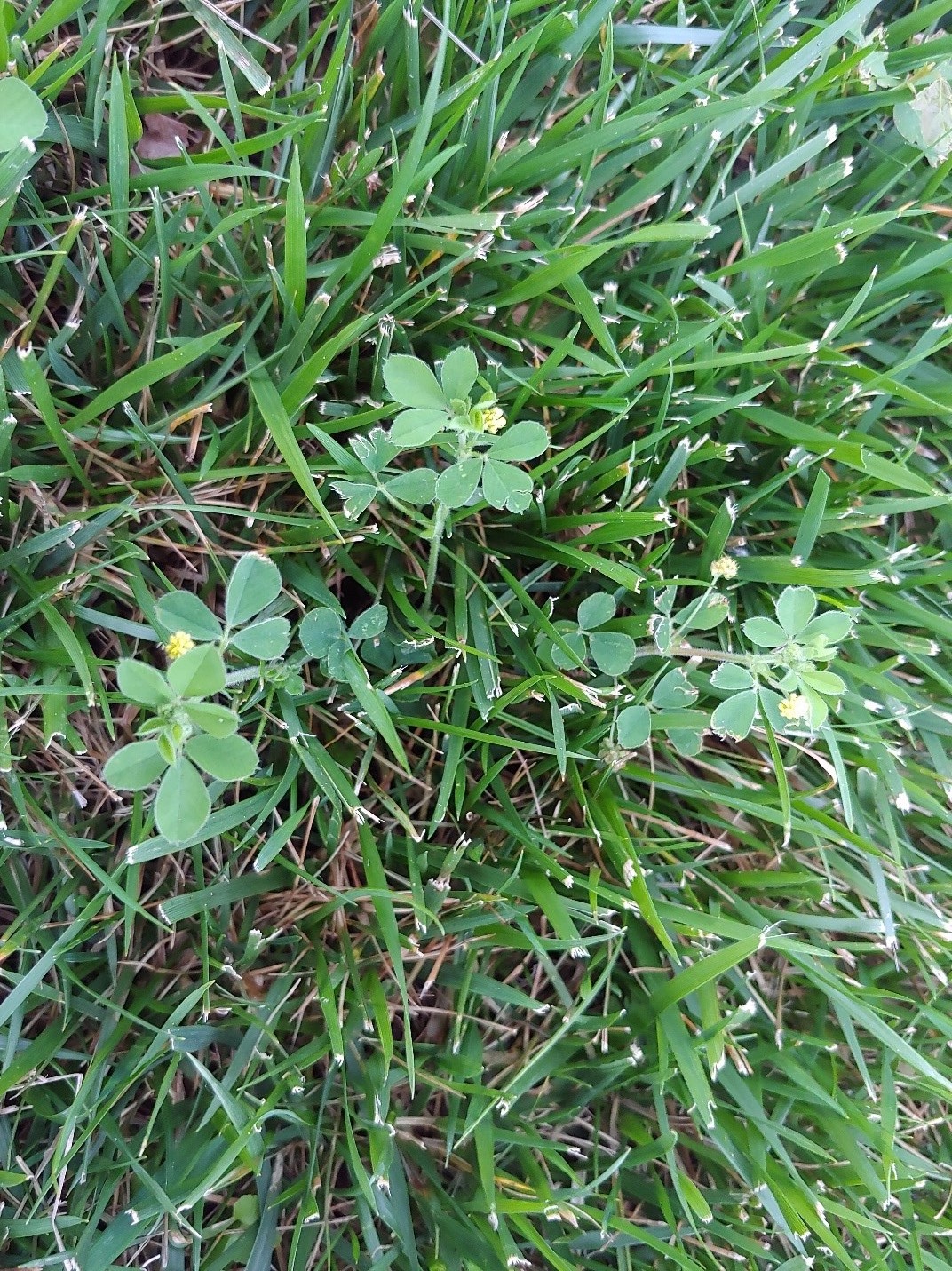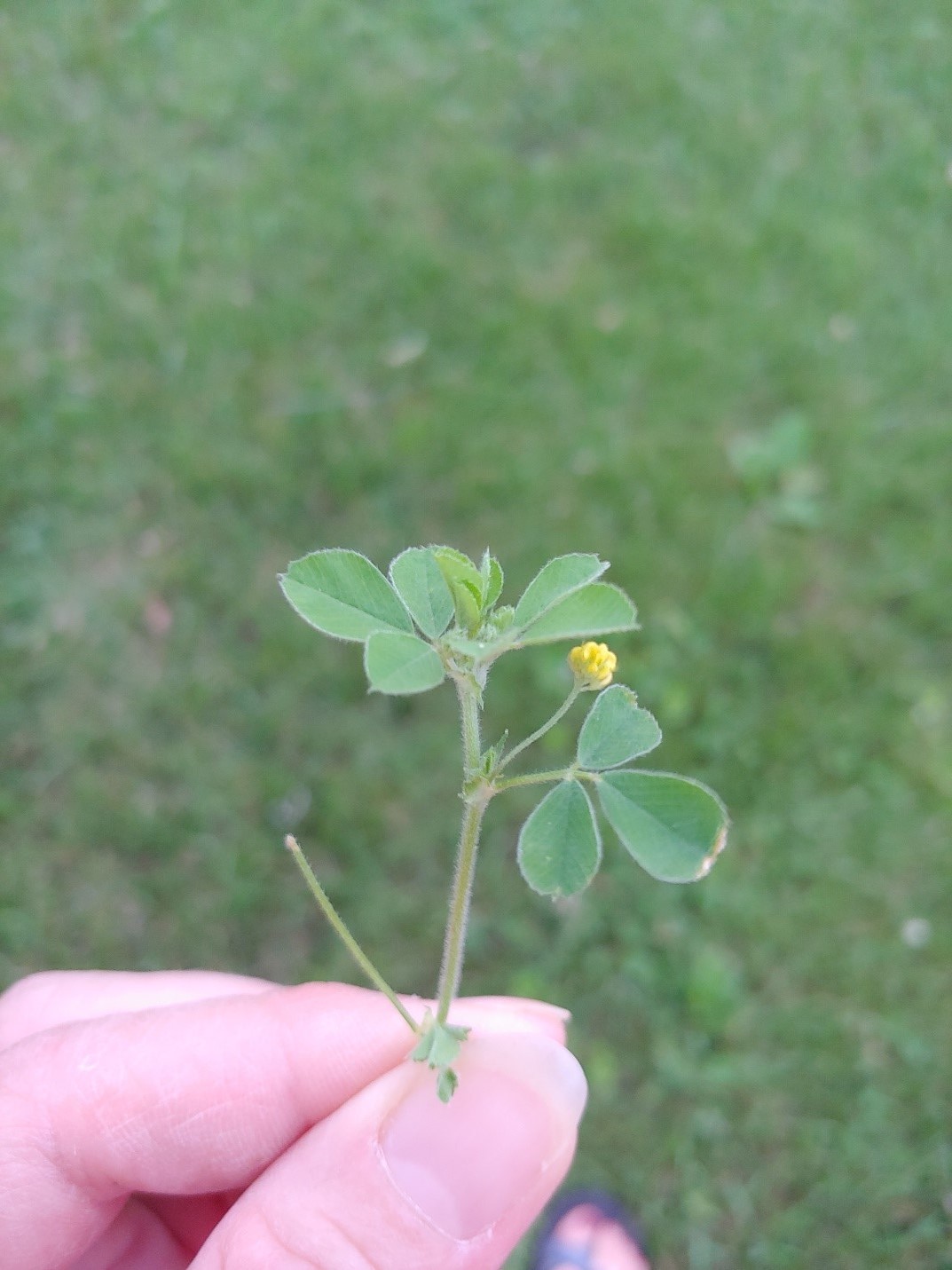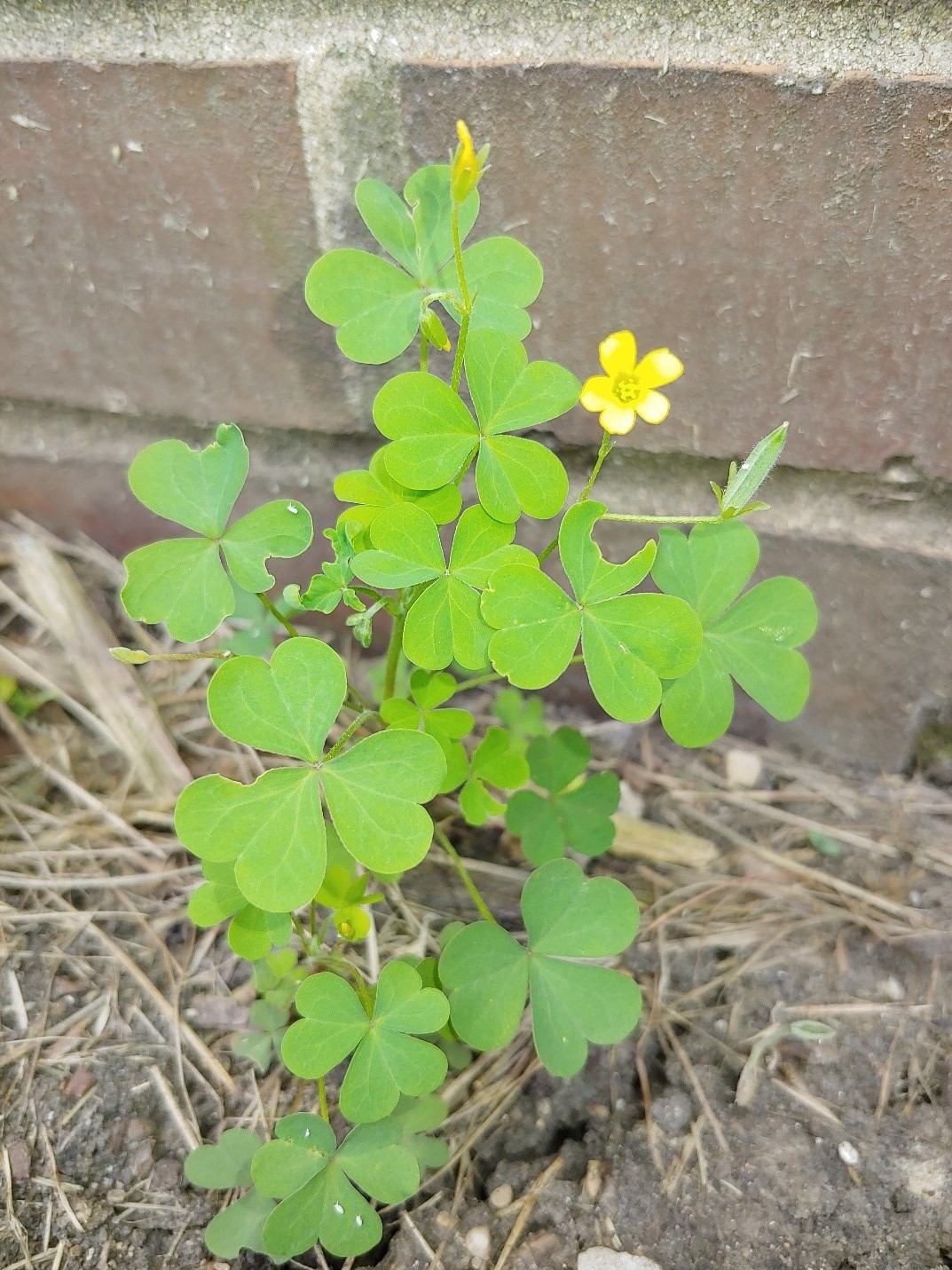Issue 6, June 28, 2019
Turf Weeds with Leaflets of Three
The Weed Gods have blessed us with several similar weedy trifoliate legumes. Then to make it more interesting, they threw oxalis (with its likeness of appearance) into the mix. It’s no wonder so many confuse these species. Fortunately, identification can be fairly simple if you know what to look for. The easiest identifiers are the flowers and leaves. Luckily, some of these are in bloom a little early this year.
White clover (Trifolium repens) is a cool-season, perennial legume that may not be a weed at all to some. Prior to the advent of chemical control methods after World War II, clover was a common addition to turf seed mixtures. It is drought tolerant and serves as a source of nitrogen for lawns. Somewhere along the line, it became an undesirable species due to its ability to cause stubborn grass stains and attract bees to children’s play areas. Broadleaf herbicides used to target other broadleaf weeds such as dandelion often injured or killed white clover too. Today, many have returned to adding clover back to the landscape as it requires fewer inputs and attracts pollinator insects. Low-growing, white clover spreads by stolons, creeping stems that root at the nodes and forms patches. Its roots are fibrous. The trifoliate leaves have three unstalked, oval leaflets, each marked with a faint white crescent. Petioles are longer than the leaflets. The pea-shaped flowers are white, sometimes tinged with pink, and are combined into rounded (globose) heads (inflorescences). White clover likes moist, low-fertility soils and cool, moist springtimes, which we’ve certainly experienced this year.

White clover in turf
Black medic (Medicago lupulina), unlike white clover, has a stalked central leaflet. This is the first thing to look for unless there are flowers present. The bright yellow, pea-shaped, clustered blooms should tip you off right away that this plant may look like white clover but it’s certainly something else. The petioles of black medic are shorter than the leaflets and it has a shallow taproot. Also, it’s usually a summer annual (sometimes a winter annual or biennial) and likes droughty, low-fertility sites. I’ve noticed quite a bit of black medic this year despite its preference for dry conditions.

Black medic in turf

Black medic up close
Yellow woodsorrel (Oxalis stricta) also has three leaflets, but each leaflet is heart-shaped rather than oval. Like black medic, the flowers are yellow but instead are comprised of five petals. Like white clover, the central leaflet is not stalked. Petioles are much longer than the leaflets. Yellow woodsorrel is a perennial that spreads by rhizomes, but it can act as a summer annual. It often grows more erect than the previously mentioned species and seems to tolerate a wide variety of soil types and site conditions.

Yellow woodsorrel
After proper identification, controls may be administered. Refer to “Broadleaf Weed Control in Turf,” issue no. 2 in 2018 of this newsletter (http://hyg.ipm.illinois.edu/article.php?id=967) for further assistance.
Adapted from an article published June 10, 2003, written by Tom Voigt and Michelle Wiesbrook.
Author:
Michelle Wiesbrook